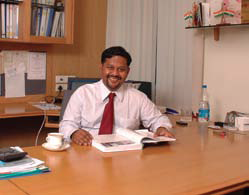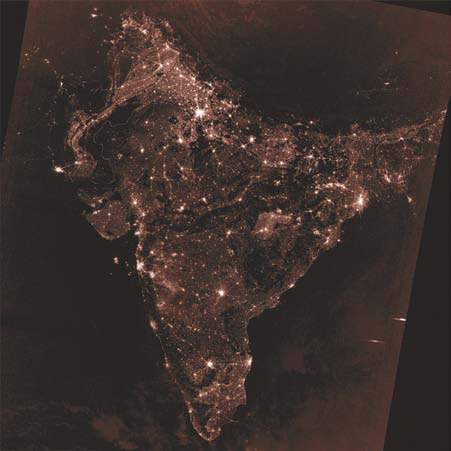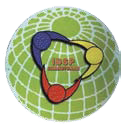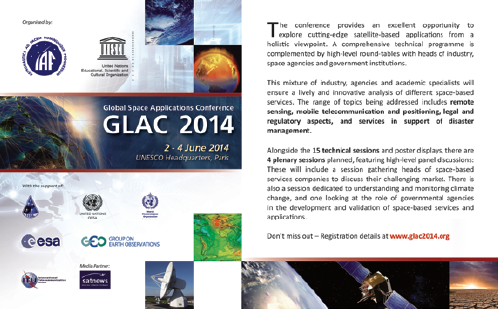Mr. Shivaji Chatterjee is the Business Head of the Enterprise Business Unit at Hughes Communications India Limited (HCIL). He leads the functions of the Enterprise Business Unit that encompasses various aspects of sales and marketing, operations and program management at the company.

He is a gold medalist in computer engineering from Pune University. Subsequently, he completed his post graduation in marketing from NMIMS in Mumbai. Of his 17-year career 15 of those years have been spent at Hughes during which time he has won several sales and marketing accolades, including three awards as the International Marketing Person of the Year at Hughes Network Systems USA. In January of 2012, he was also awarded “Hughes CEO’s Honor Award” which recognized his achievements globally.
Having begun his career at Hughes as an Account Manager in 1997, he has grown to head the Enterprise Business Division and has spearheaded many achievements for Hughes and for the VSAT industry in India. His areas of expertise include satellite communications, broadband networking and business solutions—across diverse industry segments—with many firsts in the areas of Digital Cinema, eGovernance, Banking and Distance education.
SatMagazine (SM)
Mr. Chatterjee, would you please tell our readers about the Hughes Communications India (Hughes India) operation and its mission and goals? What is your role with the company’s Enterprise Division and what are your responsibilities?
Shivaji Chatterjee
Hughes Communications India Limited (HCIL) is the leading satellite broadband company in India, having started its commercial operations in the country 19 years ago. HCIL has steadfastly held its leadership position in the Indian satellite market, with more than a 40 percent market share, as per the official TRAI reports.
I currently head the functions of the Networks Business Unit, which is a truly interesting and challenging role as I must keep in mind the entire Indian market; demanding Indian customers, a tumultuous economy and an extremely high level of competition.
SM
There is a great need in India, as is the case in many countries, to reach underserved populations with communication capabilities. How is Hughes India addressing these needs?
Shivaji Chatterjee
We believe satellite technology can be a great equalizer when it comes to served and underserved populations. Over the last two decades, we have consistently reached remote locations by way of our different service offerings, whether in Education, Healthcare, Banking, etc. In the Education sector, Hughes has powered different Edusat projects of the government and has also made distance learning a possibility, both in the public and private sector. In Healthcare, Hughes has helped doctors transform eLearning—a distance learning platform, to pursue their higher degrees by way of powering medical coaching classes.
Satellite technology has played a major role in financial inclusion, as well. Banking has been a focus area for us. Hughes has helped the banking institutions successfully execute a large portion of the Ministry of Finance (MoF) project.
In rural and remote areas of the country, for example, a high percentage of the population is considered “under-banked,” an industry term that means that the average branch office in these areas serves a larger population than the national average. What’s more, every one million people in India are served by a mere 39 ATMs, translating to a vast underserved segment that offers enormous potential for growth.
There is also a strong correlation between under-banked areas and low tele-density areas where the reach of terrestrial telecommunications is low. This lack of infrastructure and services creates a significant digital and financial divide among Indian people.
Fully managed satellite and terrestrial broadband solutions from HCIL are helping to close that divide. As the leading provider of satellite broadband solutions in the Indian financial sector, Hughes today supports more than 28 nationalized and private banks with nearly 35,000 branches and 20,000 ATMs .
SM
In relation to the previous question, technologies are becoming available to bring SatHealth™ capabilities to patients and health providers. What role do you see for satellite communications for the delivery of crucial medical care throughout India?
Shivaji Chatterjee
India with its vast population still has a skewed doctor to patient ratio. This ratio becomes worse as we move from the metro areas toward rural and underserved areas. Satellite communications are capable of connecting the doctors and healthcare providers to far flung areas in normal times and in emergencies using broadband technology.
Government and healthcare providers can make good use of this technology to propagate healthcare in a cost-effective manner. Patients do not have to rush to tier 1 / metro cities to avail themselves of quality healthcare, thereby saving time and cost. There can be different applications relating to SatHealth, such as tele-medicine, second opinion services, disease surveillance, and mother-child and birth data records.
SM
Does Hughes India have a program in place for such good works? If so, would you please tell us about the project and, if not, is such in the planning stage?

Shivaji Chatterjee
Hughes has been servicing the Health industry for many years now. We set up the Integrated Disease Surveillance Program (IDSP) for the Ministry of Health in 400 locations across India. This network was set up to provide early warnings for disease outbreaks—so that they can be controlled and confined to a limited geographical area within the country. We are providing network services for the National Rural Health Mission (NRHM) in various states in the country. The National Rural Health Mission (NHM) was launched in April 2005. The NRHM focused especially on 18 states with poor infrastructure and low public health.
SM
What type of Hughes equipment is, or will be, used for connectivity?
Shivaji Chatterjee
With more than 4 million satellite terminals shipped to customers in over 100 countries, the Hughes HN and HX Systems are the most advanced and widely deployed around the world. Optimized for broadband IP services, Hughes Broadband Satellite Systems support a wide variety of applications from high-speed Internet/intranet access, to video conferencing, to voice (VoIP). These technologies have been deployed for the above projects. Where broadband access is required, the HN System is used. Where higher QoS services are required for voice/video, then the HX System is deployed.
SM
How does SATCOM deliver data to and from patients and doctors in a secure fashion? Are there any current projects you can discuss that reveal the security and efficacy of SatHealth?
Shivaji Chatterjee
Hughes satellite technologies have extremely high levels of security. The entire system is encrypted with 3DES encryption. Over and above, we have conditional access (CAC) implemented which permits only authorized VSATs to get established onto the network. We also have IPSEC encryption on an end-to-end basis to ensure the data is further encrypted.
This combination of secure technologies has been deployed at the programs previously mentioned for IDSP and NRHM.
SM
Has Hughes India developed relationships and partnerships with medical service and bandwidth providers to further the company’s involvement with SatHealth solutions for the country? What additional connections need to be made to help move SatHealth projects forward?
Shivaji Chatterjee
We are actively engaged with the Ministry of Health, which is the key ministry for all health projects in the country. We have extensively promoted the use of SATCOM in the health industry in the country due to the characteristics of India and the criticality of such communications for this sector.
We work with tele-medicine companies to find an optimal solution (technology, low bandwidth/high QoS video quality) to penetrate tele-medicine throughout the country—as that will address the poor doctor to patient ratio in the country.
The penetration of mass e-governance through common service centers and other kiosk networks into rural India will spur the penetration of SatHealth—as these key health applications can ride over the e-governance networks and centers effectively. We are working extensively on rolling out SATCOM-powered e-governance networks to more than 250,000 rural locations in the country.

SM
One concern may be the ongoing need for training and support for SaHealth programs, both internally and by users. How is Hughes India addressing this need?
Shivaji Chatterjee
India has the highest number of medical institutes in the world, yet many students around the country are not able to access quality education due to geographical limitations. With a network of over one million schools, and 18,000 higher educational institutions, India has one of the largest educational systems in the world, and the online education market is forecast to grow to USD 40 billion by 2017. As the leading satellite communications provider in the country, HCIL is helping such institutions expand their reach and accessibility across India, and already runs its tele-education solutions to other renowned medical institutes.
This initiative represents a paradigm shift in medical education, as it will dramatically increase the accessibility of knowledge to every corner of the country—employing our latest, most cost-effective and user-friendly technology platforms.
We currently have established two large medical training networks for the Dr. Bhatia Medical Institute and Delhi Academy of Medical Sciences—connecting over 100 locations across the country. Hughes provides a turnkey service here enabling the entire solution—studios, classrooms, audio and video equipment, training and recording software, and VSATs, of course.
SM
What can we expect to see from Hughes India over the next few months in regard to the company’s commitment to SatHealth?
Shivaji Chatterjee
We will continue to work closely with the Ministry of Health, various healthcare technology companies and providers, medical training companies to further the cause of SatHealth in the country. We will also actively promote e-Governance networks as they will set up the infrastructure platform on which various SatHealth applications can effectively ride.
We are currently deploying a 106-site network in the state of Meghalaya specifically for NRHM applications over the next two months (as of this writing).
For additional information regarding HCIL, please visit http://www.hughes.in/
To contact the author, please email schatterjee@hughes.in
Editor’s note
The introductory image of the subcontinent of India is courtesy of the NASA Earth Observatory. The image is by Jesse Allen and Robert Simmon, using VIIRS Day-Night Band data from the Suomi National Polar-orbiting Partnership (Suomi NPP). Suomi NPP is the result of a partnership between NASA, the National Oceanic and Atmospheric Administration, and the Department of Defense. Caption by Adam Voiland.



